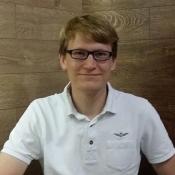Theoretical seminar | 27 January 2021

Photons, electrons, and neutrons carrying orbital angular momentum with respect to their propagation direction have been extensively studied during the last decade, both theoretically and experimentally. While twisted photons have already found applications in microscopic manipulations, quantum optics, atomic physics, and even astrophysics, massive particles with phase vortices are relatively new objects of study. They have been proved to be useful for electron microscopy, hadronic physics, neutron optics, high-energy and spin physics. I'll give an overview of the basic models and features of the vortex packets, relate them to the Laguerre-Gaussian beams, to the electron states in external electromagnetic fields, and to classical angular-momentum-dominated beams. I'll also discuss how the basic processes of QED get modified when vortex states come into play and why it is vital and timely to implement ideas and methods of quantum optics into hadronic and heavy-ion physics. Along with the vortex states, there are other non-Gaussian packets with the not-everywhere-positive Wigner functions - such as, for instance, the Airy beams - that can become a useful tool for quantum tomography and entanglement, quantum electron microscopy, and so forth.
